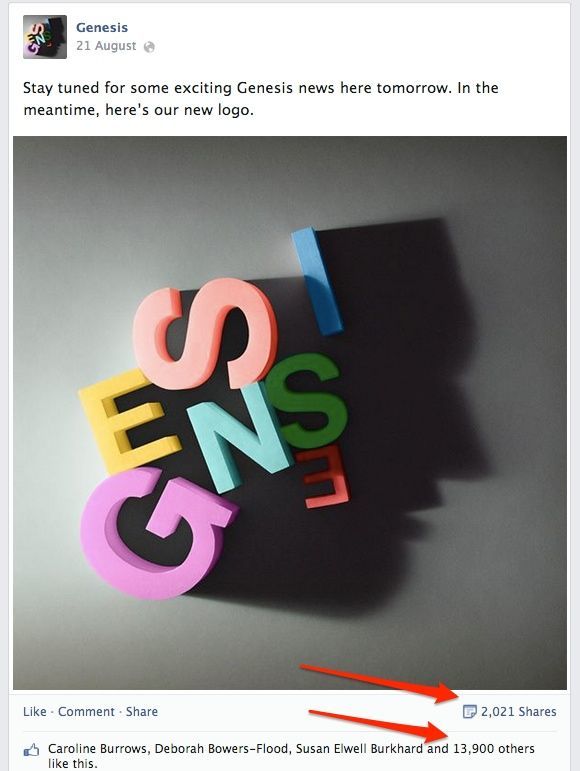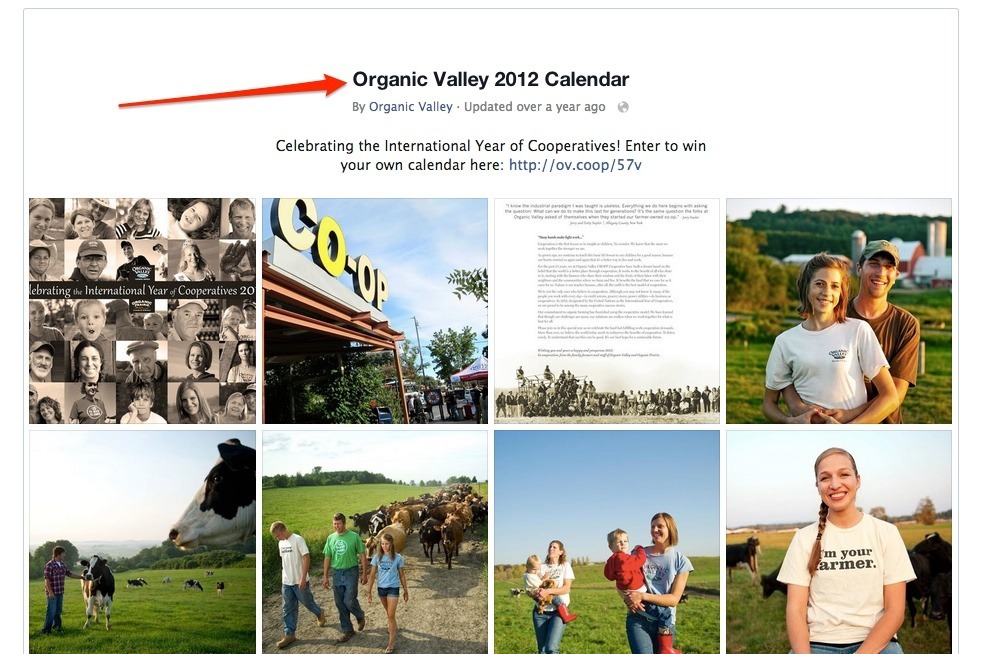It’s a fact – content rocks todays marketing. It costs 62% less than traditional marketing and generates 3 times as many leads (DemandMetric). It’s no surprise that according to Content Marketing Institute, 93% of B2B marketers rely on content to promote their brands.
But, given the wealth of different platforms, in order to fully avail of it’s abilities; you need to understand each one and create strategies to best avail of it’s abilities.
Over the last few weeks I outlined basic strategies for content marketing on Twitter and Pinterest. Today I want to tackle the biggest social network of all – Facebook.
What drives Facebook CM?
A wise person once said that just like Pinterest is for creativity, Facebook on the other hand is for communication. And, it seems just about right. In the recent study by Vision Critical, 80% of Pinterest users say the network is useful for generating ideas and projects while 63% of Facebook users say that their network makes them feel connected.
And what else drives connection better than content these days?
After all, it is content that gets Facebook audience to like a post, comment on it or share it. And unlike other social networks, Facebook offers a plethora of options and content types you can use to engage with your audience.
To begin at the beginning, what make a good content for Facebook?
In short, it would be one that relates to the interests of your audience and engages them because it relates to real life. A good content tells stories, asks the audience for their opinion and provokes them to share their personal opinion.
Types of content for Facebook
Before you start planning your content strategy, let’s first discuss different content types you could post on your Facebook Page.
Facebook offers 4 distinct options for those content types:
Single Image
Photos are one of the most engaging content types. They are quick to absorb and digest their meaning. Not to mention that they take up a considerable space on the users news feed, making them highly noticeable and sticking out more than text. By using photos, you can boost the attention your posts receive from users.
Moreover, Facebook images generate 120% more engagement than an average post.
There are different types of images you could post on your Page:
- Photos
- Memes
- Product Images
- Ads
- Press clips and many more

Photo Album
Photo albums allow you to post multiple images at once in a single post. Images collected into a specific album are a great way to promote content from events, promotions, product lines and more.

Videos
Videos have become one of the most engaging content type today, and to no surprise. 93% of marketers use video for promotion and 52% of them name video as a content type delivering the best ROI (Brainshark) 100 million users watch online videos each day (VideoBrewery)
Video is also a powerful communications tool. A single minute of video can convey the same message as 1.8 million words (VideoBrewery).
It comes to no surprise then that videos are a highly engaging content on Facebook. In fact, videos posted to the site receive 40% higher engagement rate compared to Youtube for instance (SocialBakers). They also account for 93% of the most engaging content on the site (FastCompany).
When posting your video to Facebook, make sure to stick to these rules:
- Include eye catching default image
- Make it short
- Make it simple to absorb and relevant to your audience

Text
Lastly, text based content. Even though Facebook allows posting long content, it’s the short text that gets the most engagement from the site. Updates up to three lines of text see 60% more engagement than any longer content. Cutting your text even shorter, below 80 characters might result in 66% more engagement (FastCompany).
The best text based updates to drive engagement are questions, which receive 100% more engagement than other types of text-based content (Hubspot).

How to make your content relevant to your audience
Before you start posting to Facebook you should define who you want to engage with on the site and what content themes would achieve this objective.
When defining your audience, don’t just look at their age, location and other demographic factors. When it comes to Facebook, its user base crosses many geographic boundaries, and thus your best bet is to target their interests as well.
To post relevant content, focus on:
- Focus on your audience’s common interests
- Target their most common problems
- Deliver news relevant to them
- Offer advice on making their lives better
- Entertain them too, after all, you can’t be serious all the time.
When an how often should you post to you Facebook Page
Timing is everything, fact. Having your post appear on your audiences News Feeds right when they are the most receptive to your message would be ideal. But even though it would be ideal, there is no single ideal time to post to Facebook. Even though there are so many studies on the subject, there is no unified opinion what day and time would generate the most engagement from users.
In spite of that, you can still find your best time to post to the site by doing the following:
Understand your audience. It’s hard to decide on the best time to post if you don’t know who’s on the other side, listening. Define your audience and try to understand their habits.
Think about how their day looks like. Once you know who your audience is, think how their typical day might look like. What are their productive times? When would they be trying to unwind and relax? All these factors will help determine the best time to post.
Post within what you think is their most receptive time during their day. Use the information about your audience to define times you will be posting at. Of course, you should measure and refine your strategy to find the most optimum time.
Posting About Yourself
Even though, as we’ve seen, your content should target your audience and their interests, needs and problems, there will be times when you’ll want to post about yourself. You may have a new product line coming out or will want to promote the company. On Facebook however, there is a fine line between informing users and being overly too promotional. And needless to say, the latter usually moves people away from a brand at an instant.
Facebook fans don’t care about you they care about themselves. Therefore,
- keep posts about your company to absolute minimum.
- if you need to post something about your company, try to make it relevant to your audience or at least entertaining
- when posting about your products, always show them at an angle how they could help the audience
Promoting Your Content
This might come as a surprise but your posts reach only a fraction of your fan base. In fact, according to official data from Facebook, posts on company Pages appear on only 16% of their fans News Feeds.
Therefore, if you want to reach more people, you need to promote your posts.
There are two ways you could do so with:
– Promoted Posts
– Promoted Page Posts
Promoted Posts allow you to promote your content directly to your fans’ News Feeds as opposed to the sidebar where the majority of standard Facebook Ads appear.
Promoted Page Posts appear in the sidebar on the site, making them less effective when promoting your content. On the other hand, they allow you to reach people who are not your Page fans yet and be laser focused with what demographics you target with your ads.
Monitoring your actions
One of the greatest advantages of using Facebook for engaging with audience is the ability to gain insights and data to monitor and analyze your actions.
Facebook Insights make it easy to monitor the performance of your content marketing strategies in real time. Thanks to this data you can quickly see which type of content engaged your audience the most (and thus which one you could promote even further to them).
Here are some of the data types you can monitor in Insights:
Reach – the number of unique people who have seen your content,
Organic – the number of people who’ve seen your content in their NewsFeed or on your page.
Paid – the amount of people who’ve seen your post from paid ads.
Viral – the amount of people who’ve seen your content because one of their friends interacted with it in some way (liked it, commented on it or shared it).

